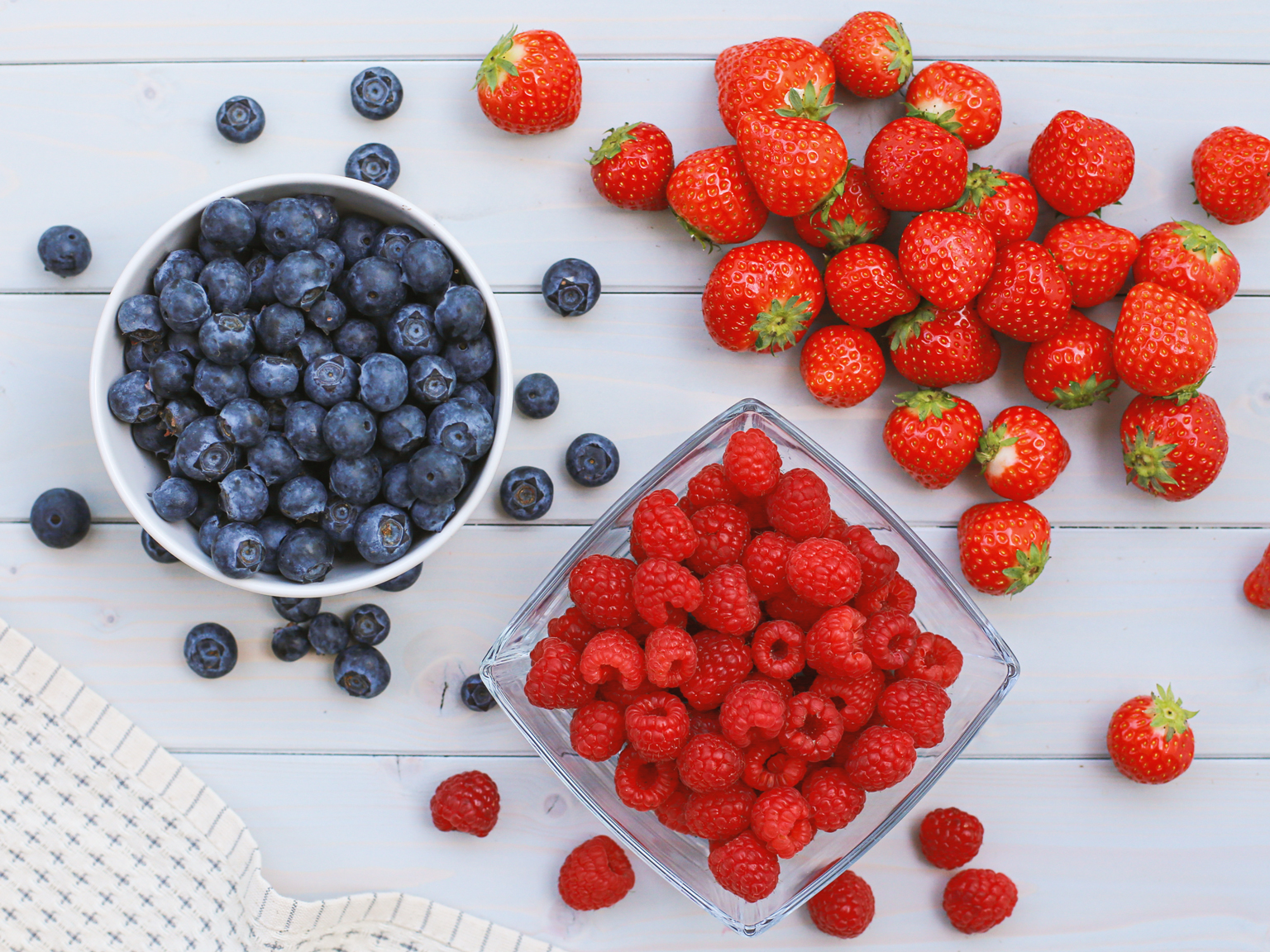Summer is the season for swimming and barbecues, and for harvesting many delicious berries. Find out which ones you can find in Switzerland and how you can fulfil your dream of having your own berries in the garden with this article.
Swiss berries enrich any menu, are fruity, sweet, sour and a tempting snack — especially on hot days. The season of the native perennial fruit lasts from May to October and then rings in the colourful autumn.
Although berries were planted in home gardens in France and England as early as the 14th and 15th centuries, the history of Swiss berries began very late. The Swiss, for example, began cultivating berry fruits, strawberries and raspberries from 1920 onwards to be precise.
Varieties Found in Switzerland
Start the berry season with the queen of berries, the strawberry. This wonderfully fragrant red berry is one of the most popular berries in the world.
Along with the blue honey berries, strawberries are the first to usher in the berry season. The honeysuckle plant originates from the mountain forests of Siberia and is now one of the most popular berries in Switzerland. Blueberries are also becoming increasingly popular. Their cultivation area has tripled in the last 10 years and it is impossible to imagine Switzerland without them.
Another native berry variety is the currant. Whether red or white, their high content of minerals, vitamin C, pectin and fibre makes them a healthy snack with a tart and sour flavour. The dark blackberries also have a rather sour taste. Only shortly before harvest do they change their taste from sour to deliciously sweet. The colour-intensive berries are especially popular in jams and complement breakfast bread perfectly!
Raspberries are also an indispensable part of the berry menu. In addition to their unique taste, the colourful berries are said to have health-promoting effects. Raspberries are considered to be anti-inflammatory, appetising, diuretic and simply delicious!
Fulfil Your Raspberry Dreams in Your Own Garden
Raspberries can be planted all year round, provided the soil is frost-free. If the sweet berries are planted by the end of November, you can expect to harvest them the following year. In addition, raspberries are very easy to care for and can be harvested annually for up to 20 – 30 years.
How to Plant Raspberries Correctly
The soil for a successful raspberry harvest must be loose, humus-rich and permeable. It is advisable to add compost or bark mulch to loosen the soil. Choose a sunny to semi-shady location. It is also important that no raspberries have previously been planted in the intended location. This guarantees a bountiful and long-lasting harvest.
Small raspberry bushes are usually planted directly into the ground. Mix a handful of autumn fertiliser into the hole provided and plant the perennials 30-40 cm apart. A distance of 120 cm between the rows is a good choice. Water the root ball well before planting. Furthermore, plant the raspberries deep enough that the upper surface of the root ball is flush with the ground.
A Climbing Frame for Raspberries
To prevent the raspberry canes from collapsing under their own weight, you should build a framework. This is simply constructed between metal posts using tensioned wire ropes. The wires should reach a height of 2 metres and be spaced about 50 cm apart. You can tie the individual canes to this later and better distinguish between the old and new canes. This is because the old canes are cut away after the harvest to be prepared for the next season.
There are different raspberry varieties that you can choose for your garden. One of the most popular varieties is the easy-to-care-for ‘Autumn Bliss’. If you want to enjoy a raspberry harvest all year round, we advise you to plant several varieties. This will make it possible to harvest raspberries every day from mid-June to autumn.

How to Use Your Own Raspberries
Sweet raspberries offer a wide variety of processing possibilities. Not only are they a refreshing treat straight from the bush, they can also be used in different ways:
- Raspberry Jam
- Raspberry Ice Cream
- Raspberry Parfait
- Raspberry Mousse
- Raspberry Balsamic
- Raspberry Cake
- Raspberry Pudding
- Raspberries in Muesli
- Raspberries in Salad
Keep in mind, this is only a small selection of possible ways to use raspberries. There is plenty of room for creativity. Especially when combined with dark chocolate, wonderful creations can be created that make your mouth water just thinking about them.











What do you think?